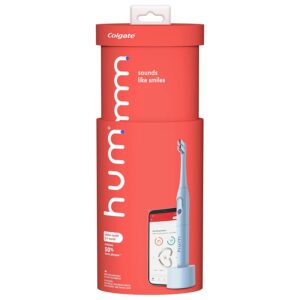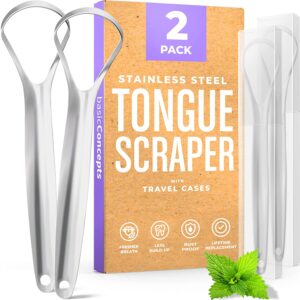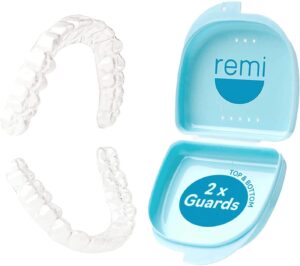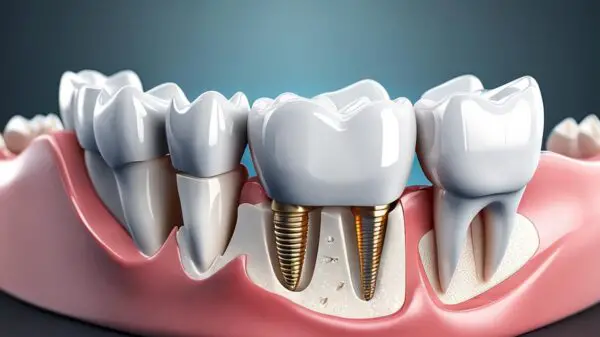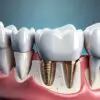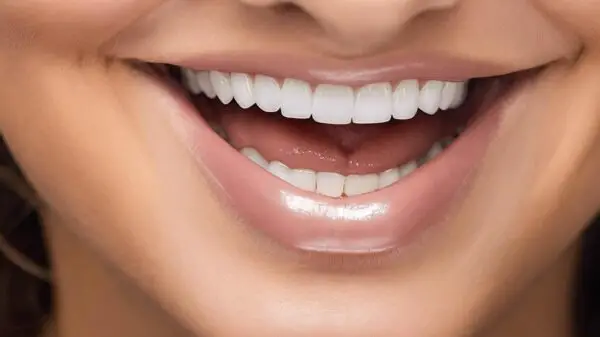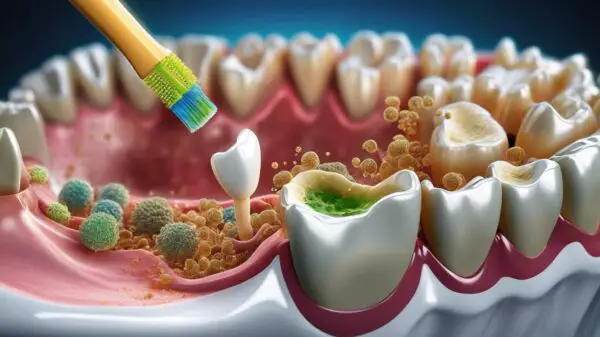10 Natural Ways to Get Rid of Gum Pockets
Gum pockets are a common oral health issue that can occur for a variety of reasons. Gum pockets are small, shallow pockets that form between the teeth and gums. Plaque and tartar buildup, poor dental hygiene, gingivitis, and periodontitis are all possible causes of gum pockets. Gum disease is a serious condition that can damage the gums, bones, and ligaments that support the teeth. Without treatment, it can eventually lead to tooth loss. Today we’ll give you ten natural methods for the treatment and prevention of gum pockets. 10 ways how to get rid of gum pockets naturally:
- Practice Daily Tooth Brushing
- Eat a Healthy Diet
- Quit Smoking
- Use an Electric Toothbrush
- Floss Daily
- Use a Mouthwash
- Visit Your Dentist Regularly
- Use a Tongue Scraper
- Avoid Teeth Grinding
- Manage Stress
So now that you have an idea of the different ways to get rid of gum pockets naturally, let’s examine each way in more detail.

1. Practice Daily Tooth Brushing
It is important to brush your teeth at least twice a day, preferably after every meal. The best way to brush your teeth is to use a soft-bristled toothbrush and fluoride toothpaste. You should aim to brush for two minutes each time you brush, using circular, back-and-forth, and up-and-down motions. Be sure to brush on the inside surfaces of your teeth and to use a light touch so you don’t damage your gums. After brushing, spit out the toothpaste, don’t swallow.
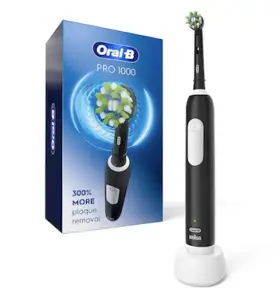
2. Eat a Healthy Diet
A healthy diet is important for your dental health for several reasons. First, eating a balanced diet helps to keep your teeth and gums strong and healthy. Foods that are rich in vitamins and minerals help to keep your mouth clean and free of bacteria. Second, a healthy diet can help to prevent tooth decay and gum disease. Sugary and acidic foods can damage your teeth and lead to cavities. Finally, a healthy diet can help you maintain a healthy weight. Being overweight can put you at risk of developing gum disease and other dental problems.
3. Quit Smoking
Smoking not only causes bad breath and stained teeth, but it also increases your risk for gum disease. Gum disease is an infection of the gums that can lead to tooth loss. Smoking makes it harder for your body to fight off infection, which means that your gums are more likely to become infected. Smoking also decreases the blood flow to your gums, which means that they are less able to fight off infection. Additionally, smoking makes it harder for your body to heal from injury, so if you do develop gum disease, it will be more difficult for your gums to heal.
4. Use an Electric Toothbrush
Electric toothbrushes are often recommended by dental professionals because they are proven to be more effective at removing plaque and bacteria from teeth than manual toothbrushes. Plaque is a sticky film of food debris, bacteria, and saliva that can build up on teeth and cause cavities. Electric toothbrushes are more effective at removing plaque and bacteria because they have bristle heads that rotate or vibrate, which helps to loosen and remove plaque from teeth. Many electric toothbrushes also have built-in timers that help you brush for the recommended two minutes. This is important because it takes two minutes of brushing to effectively remove plaque and bacteria from teeth.
In addition to being more effective at removing plaque and bacteria, electric toothbrushes are also gentle on teeth and gums. This is because they have softer bristles than manual toothbrushes. Electric toothbrushes can also help to reduce gum inflammation and bleeding.
5. Floss Daily
Flossing is an important step in oral care routines for preventing gum disease and promoting healthy gums. When done correctly, flossing can clean areas of the teeth that are difficult to reach with a toothbrush. It also helps remove plaque and bacteria from the teeth and gums.
There are a few different ways to floss, and the method you use may be determined by the type of toothbrush you have. If you have an electric toothbrush, you can use the flossing attachment that comes with it. Otherwise, you’ll need to use traditional floss or a water flosser.
To floss effectively, you’ll need to use a back-and-forth motion to remove plaque and debris from between your teeth. Be sure to floss all of your teeth, including those in the back of your mouth.
If you’re using traditional floss, be sure to wrap the floss around each tooth and use a gentle sawing motion to work it beneath the gum line. If you’re using a water flosser, direct the stream of water between your teeth and be sure to hit all sides of each tooth. In order for you to get the full benefit of flossing, it must be done regularly. We suggest making it part of your daily routine: for example, if you take a nightly medication, keep your floss close by so you can always remember to floss immediately afterward. You could also make a mental note to floss every morning while your coffee is brewing. Keeping a regular flossing routine is a great way to maintain and improve your gum health.
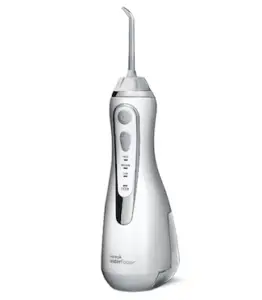
6. Use a Mouthwash
Using mouthwash can also help treat and prevent gum pockets. Mouthwashes can help remove plaque and bacteria from your teeth and gums, preventing gum pockets from forming. In addition, mouthwashes can also help to reduce the inflammation and swelling of the gums. Be sure to choose a mouthwash that contains fluoride, as this will help to protect your teeth from cavities.
To get the most out of your mouthwash, follow these tips:
- Rinse your mouth with water before using mouthwash.
- Pour 20ml of mouthwash into a cup, then swish it around your mouth for 30 seconds.
- Spit the mouthwash out after rinsing.
7. Visit Your Dentist Regularly
Dental cleanings are an important part of treating gum pockets. By removing plaque and tartar from the teeth, dental cleanings help to prevent the progression of gum disease. In addition, dental cleanings can also help to remove any bacteria that may be present in the mouth. By keeping the mouth free of bacteria, dental cleanings can help to reduce the risk of developing gum pockets.
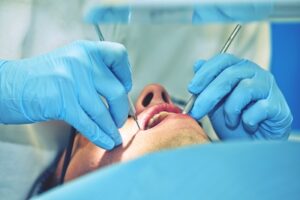
8. Use a Tongue Scraper
A tongue scraper is an instrument that can be used to remove plaque and bacteria from the tongue, and it can be especially helpful in treating gum pockets. Plaque and bacteria can build up on the tongue and cause bad breath, and they can also contribute to the development of gum disease. A tongue scraper can help to remove these substances from the tongue, and it can also help to reduce the amount of plaque and bacteria that are present in the mouth.
There are a number of different types of tongue scrapers available, and they can be made from different materials. Some tongue scrapers are made from plastic, and others are made from metal. There are also some tongue scrapers that are made from natural materials, such as bamboo.
Here’s how to use a tongue scraper:
Step 1. Start by wetting your tongue scraper with water.
Step 2. Place the scraper on your tongue at the back of your mouth and gently pull it forward.
Step 3. Rinse off the scraper after each stroke.
Step 4. Repeat until you’ve scraped your entire tongue.
Step 5. Rinse your mouth with water or mouthwash to remove any leftover debris
Because tongue scraping is not something most people have built into their dental hygiene routines, it can be difficult to remember to incorporate it regularly. We suggest connecting it to your other existing routines to make it easier to remember. We’ve also included a video here to show you exactly how to utilize a tongue scraper to maximize its benefits for your dental health:
9. Avoid Teeth Grinding
Bruxism, or grinding your teeth can put extra pressure on your gums, which can exacerbate gum pockets. If you already have gum pockets, grinding your teeth can make them worse. If you find yourself grinding your teeth, there are a few things you can do to stop. First, try to be aware of when you’re doing it and consciously relax your jaw. If that doesn’t work, your dentist can fit you with a mouth guard to wear at night. In severe cases, Botox injections can help relax the muscles in your jaw.
A fairly new option for preventing bruxism is the DIY custom mouth guard. There are now several over-the-counter methods for creating a mouth guard that is molded to your jaw and teeth. You can purchase a kit online and then follow the instructions to get an effective mouth guard to help prevent teeth grinding. Usually, an at-home kit will involve boiling a mouthpiece, biting down on the piece while it is soft, and then letting it harden into place. We’ve included links to a custom at-home mouth guard you can try:
10. Manage Stress
It’s no secret that stress can have a negative impact on your overall health. But did you know that it can also take a toll on your dental health?
When you’re stressed, your body goes into fight-or-flight mode. This triggers a release of the hormone cortisol, which can lead to an increase in inflammation throughout your body. This inflammation can put you at greater risk for gum disease and other oral health problems.
Stress can also make it more difficult to stick to good oral hygiene habits. When you’re feeling overwhelmed, it’s easy to let things like flossing and brushing fall by the wayside. This can lead to an increase in plaque and bacteria build-up, which can contribute to tooth decay and gum disease.
If you’re having a hard time managing stress, there are a number of things you can do to help. Exercise, relaxation techniques, and counseling can all be helpful in reducing stress levels. And be sure to keep up with good oral hygiene habits, even when you’re feeling stressed. This will help keep your smile healthy and strong.
Final Words
If you are struggling with gum pockets, don’t worry – there are plenty of ways to treat them naturally. We have listed ten methods in this blog post that should help get your gums back to a healthy state. Remember to practice good dental hygiene every day, eat a healthy diet, and visit your dentist regularly for check-ups and dental cleanings. These measures will go a long way in preventing the formation of gum pockets and will keep your smile happy and healthy for years to come.




